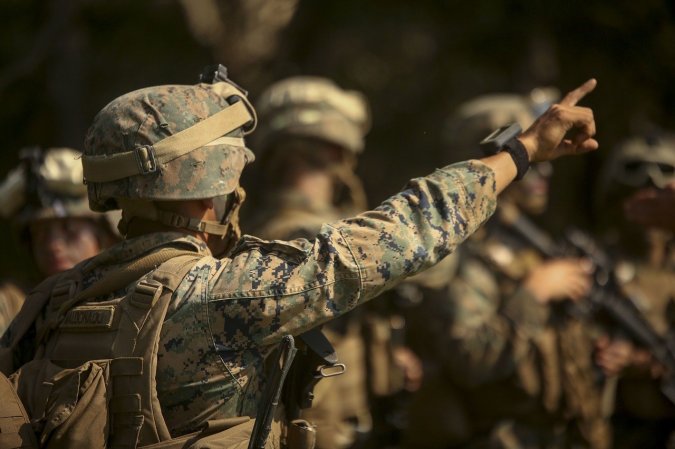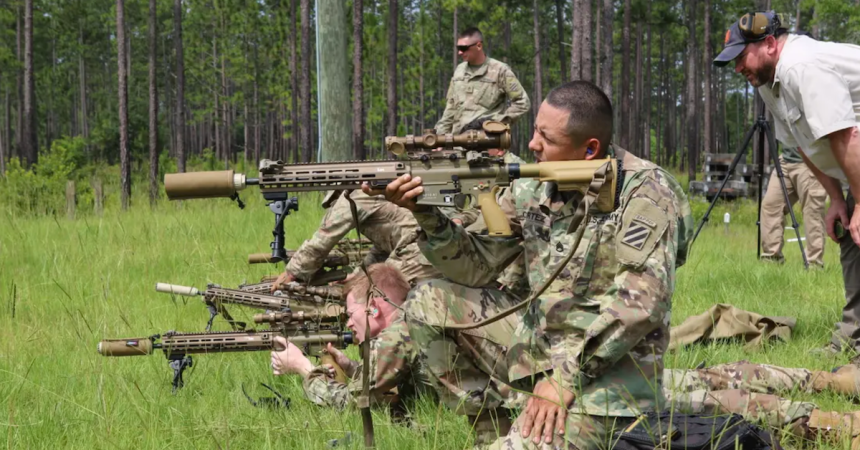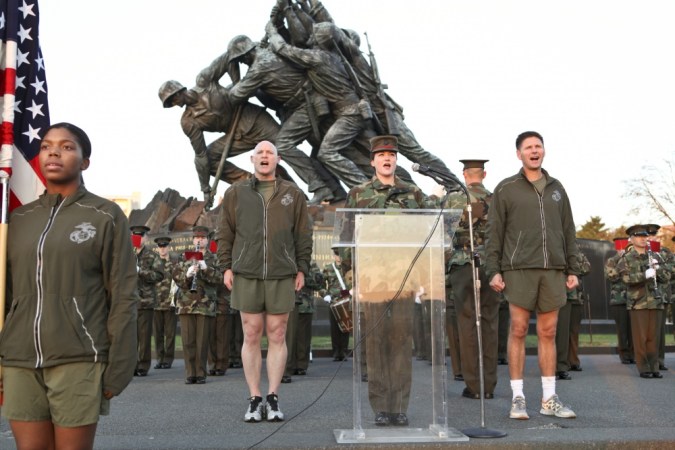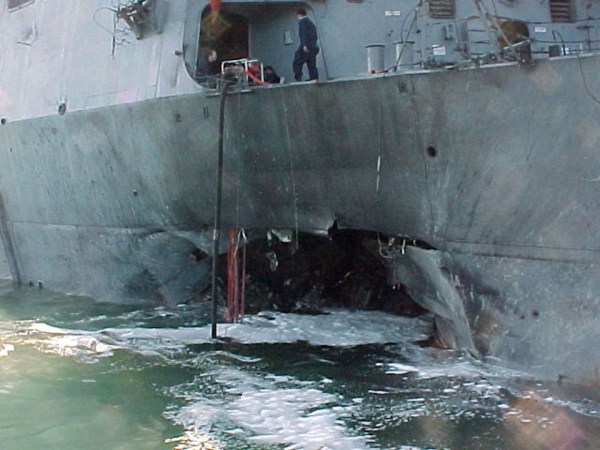QUANTICO, Va. — The Marine Corps has released a bold new operational document that projects a future fight against a high-end adversary that could nullify many of the advantages U.S. forces have enjoyed for decades, and proscribes an extensive series of actions the Marines must take to prepare for that conflict.
The Marine Corps Operating Concept is subtitled “How an Expeditionary Force Operates in the 21st Century,” and strongly reaffirms the Corps’ traditional ties with the Navy.
It also revitalizes the post-Vietnam concept of “maneuver warfare,” but modernizes it by adding cyber and information operations to the use of rapid movement around enemy strong points and employment of kinetic force to confound the adversary’s command and control.

U.S. Marines with Fleet Anti-terrorism Security Team Europe laugh during down-time, after completing an M240B machine gun range as part of Exercise Platinum Lynx at Babadag Training Area, Romania, Sept. 27, 2016. Multiple nations from across Eastern Europe, and the U.S., participated in the exercise designed to enhance warfighting capabilities and build relationships from an international level, all the way down to a platoon level. (Photo from U.S. Marine Corps)
Marine Corps Commandant Robert Neller ordered the new strategic look, which was released Sept. 28 at the 2016 Modern Day Marine Expo here, and said its primary goal was to assure that any future Marine “doesn’t have a fair fight,” but is dominant.
The MOC is a replacement for the Expeditionary Force 21 operational guide released in 2014 under then-Commandant Gen. James Amos. But the officers at the forward-looking Ellis Group who crafted it and those who will have to implement it said it goes far beyond EF21.
It envisions a Marine Corps that is able to operate in what Neller called the “six domains,” of land, sea, air, space, cyberspace and information, is prepared to help the Navy retain sea control and the ability to project power in contested littoral regions and makes extensive use of unmanned systems.
“My goal by next year is, every deployed infantry squad will have a quad copter” unmanned aircraft, Neller told a packed audience at the Modern Day Marine exposition.
Neller assured the assembled Marines that the new document does not mean they are “fixing something” or the Corps is “broken.”
But, he reminded them, since 2001 “we have been fighting an insurgency.” Although those insurgents were brave and tenacious, they did not have electronic warfare capabilities, or an air force or armor. And “they didn’t have the ability to take down our networks, to deny our comms” and they “didn’t have a sophisticated information operations plan to deceive not only us, but our citizens.”
“What we’re trying to do with the MOC,” Neller said, is to look at their organization, training and warfighting doctrine and make the changes so “if we’re going to fight somebody that has this capabilities set” the individual Marine has what is needed “to make sure it’s not a fair fight.”
The MOC contains a lengthy list of future capabilities the Corps is expected to require for that future high-end fight. It includes the ability to fight in “complex terrain,” which includes congested urban settings; can match the global technology proliferation; can use information as a weapon and can win the “battle of signatures,” which means controlling its own electronic emissions to avoid being detected and finding and countering the enemy’s.
The MOC supports a point Neller has stressed, that future Marines be prepared to operate without sophisticated long-range communications, intelligence support and navigation aids because a high-tech enemy could disrupt them.
That could complicate some of the missions the MOC, including distributed operations by small units, or using landing forces to seize and hold “expeditionary advanced bases” on an enemy’s coast line to disrupt the sensors and weapons that could deny naval forces access.
The document also emphasizes the need to integrate Marine capabilities and operations with the Navy, Special Operations Command and the joint force.
And it sets out a list of “critical tasks” required to prepare the Corps for the future.
Lt. Gen. Robert Walsh, the deputy commandant for combat development and integration, said his command, the Marine Corps Warfighting Laboratory, the training and education and acquisition commands all will have major challenges in executing the MOC’s vision.
Neller urged the Marines in the audience to read the MOC and provide feedback and criticism. He acknowledged that the document may not have all the right answers and he expects they will have to make changes to it.
But, he said: “What we won’t do is stay the same. The world is changing too fast.”


























